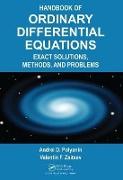World Scientific Handbook of Global Migration (in 3 Volumes)
BücherAngebote / Angebote:
As globalization and the flow of labor across the world accelerated during the latter part of the 20th century, the presence of foreign-born workers in a country's labor market became one of the most prominent and controversial features of modern economies. Countries that facilitated the arrival of foreign-born individuals often benefited from the increase in labor supply. An important channel for the benefits is through lower prices for consumer goods and services in the host country. This is not surprising because immigration is just another form of international trade, which often leads to cost savings and more diversity in the market. The immigrants themselves have also gained from international migration as it provides an opportunity to improve one's standard of living, pass remittances to family in the country of origin, and find new opportunities for general human flourishing in newly adopted surroundings. Despite the myriad benefits that can result from the free movement of labor around the world, there is still deep concern and political debate about immigration's aftermath. The main economic concern, apart from social concerns such as social cohesion, centers on whether international migrants adversely impact labor market opportunities of natives. The labor market prospects for foreign-born individuals, both in an absolute sense and in comparison to natives, are also very different across continents, as well as between countries that are in close proximity to one another. This variation could be driven by differences in the flexibility and structure of the host country's labor market or differences in the characteristics of the immigrants themselves. Examining the relative importance of these and other possible factors is another main theme in the study of immigration and the labor market. It is also addressed in the research presented in this Handbook.
Erscheint im März




